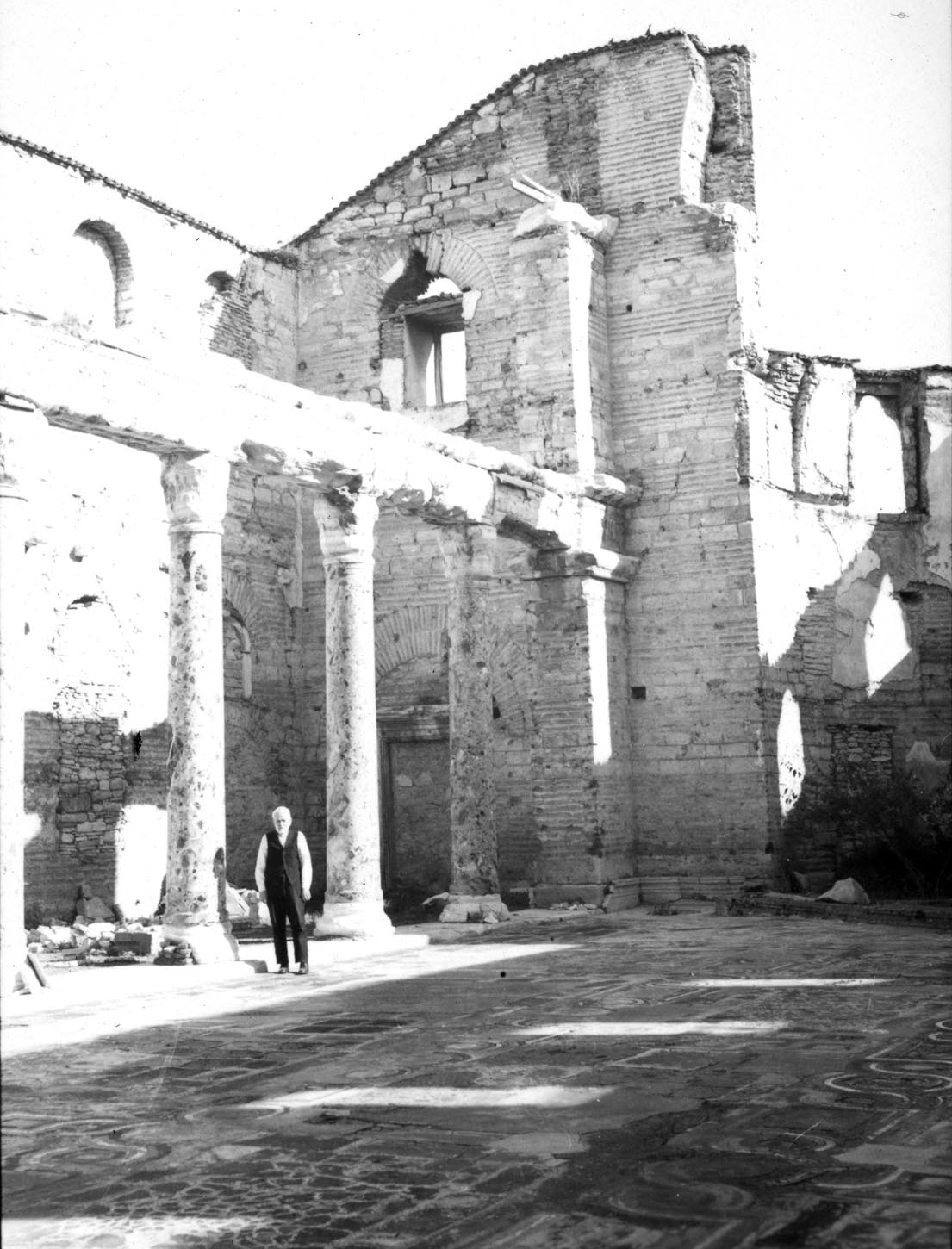
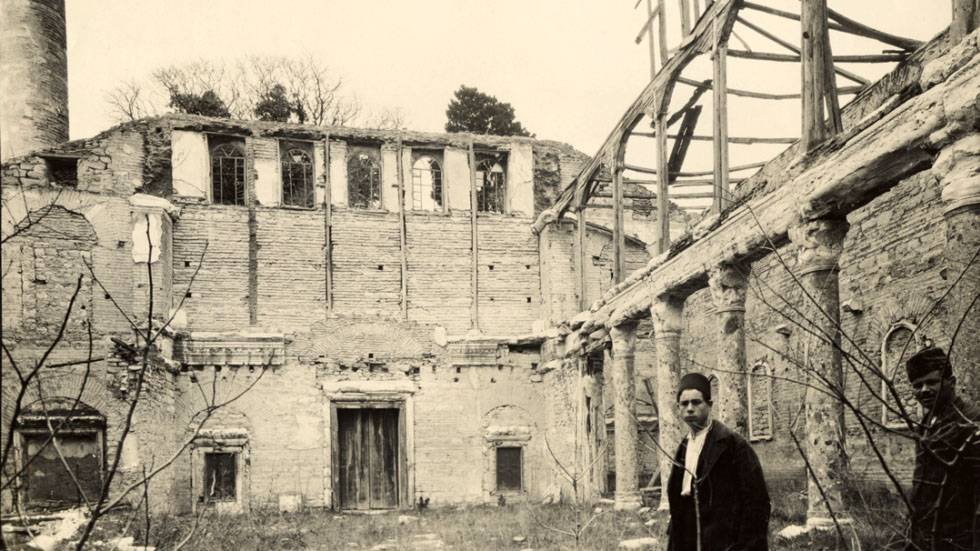
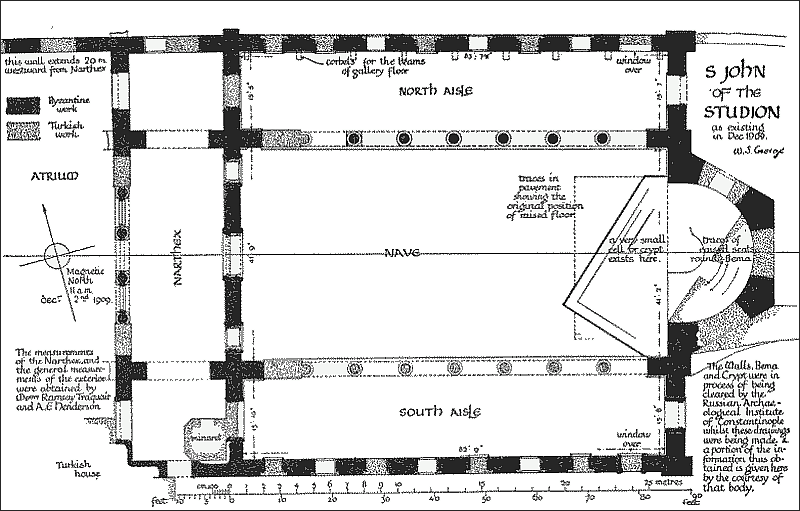 In 1403 Ruy Gonzales Clavijo visited Constantinople and gave a first-hand description of it:
In 1403 Ruy Gonzales Clavijo visited Constantinople and gave a first-hand description of it:
"Next on that same day we were taken to visit another church of the name of St John which is at the Monastery [of the Studion] is inhabited by a congregation of monks, under the rule of a prior. The entrance gateway to the convent is very high and richly wrought, this leads on to a great court beyond which stands the main building. This is the church, which is in plan square shaped with a semi-circular apse very high built. The nave is enclosed by three aisles [namely two side aisles and the narthex] the nave and aisles being all under one roof level. The church has seven altars: and the ceiling of both nave and aisles, and the walls likewise, all are adorned with mosaic work extremely richly wrought, displaying the incidents of sacred history. The nave is built on either side with twenty-four columns of green jasper, and the three aisles have galleries, which open into the central nave. In these aisles also there are to be seen twenty-four [dwarf] columns of green jasper [placed for support below the galleries]. As regards the ceiling of the nave as also the surface of the walls, everywhere it is adorned with mosaic work. From the galleries in the aisles you may look down into the central nave, and here in place of [the usual metal grating] there is a stone lattice work that is formed of small pieces of jasper. At the east end beyond the nave is a beautiful chapel wrought with the most exquisite mosaic, whereon is displayed the figure of the Virgin Mary, for this chapel indeed was built to her honor. Attached to the church is a great chamber used as the refectory, here within stands a large white marble table, and the walls of this refectory display, wrought in mosaic, the glory of the Last Supper, showing our Lord Jesus Christ seated at table with His disciples. Further this monastery possesses many suitable outhouses, with orchards and fountains, and various other convenient commodities."
The mosque "Emir Ahor Jamissi", now a ruin, was situated in the quarter of Psamathia, a short distance from the Golden Gate. It is the old church of Saint John the Baptist, which was a part of the celebrated monastery of Studius, ἡ μονὴ τοῦ Στουδίου. The church was erected in the year 450 by the patrician Studius, after whom the church and the monastery attached to it were named. He was a very rich member of the nobility and held the consulship in 454 during the reign of Marcian. The vast building was at first a parochial church; its attachment to a monastery was an after-thought of its founder. It had a huge atrium with a fountain in the center. We don't know how the second floor galleries were accessed for sure. They would have been external staircases. The central door into the nave was really big and was called the Royal Door, just like Hagia Sophia. Parts of the 5th century chancel screen survive, strewn about in the grass and garbage. The apse was decorated with a mosaic of Christ enthroned with Seraphim and fiery Cherubim, that dates from soon after the end of iconoclasm in the 9th century. Nearby - or in the apse itself - were images of the Theotokos and John the Baptist, making this another Deesis.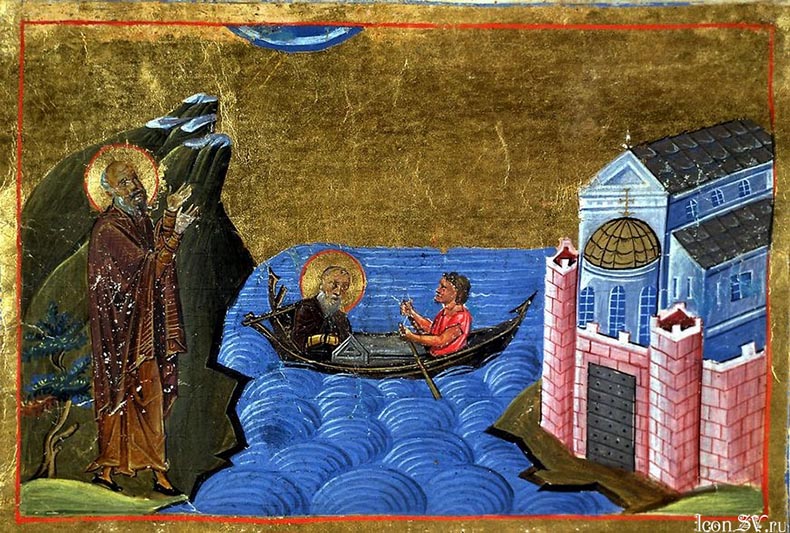
Above, Theodore the Studite and the Monastery of Saint John from the Menologion of Basil II
The organization of the monks of the "great and powerful monastery of the Studion" reflected the social strata of Byzantine society. There were three levels of monks. At the top were the were those who managed the monastery, led by the Abbot or Oikonomos, followed by the priests and deacons with the Protopresbyteros at their head, and then the wearers of the great and small habits. The Abbott would have been expected to have proven himself worthy through spiritual example and from many years of service at the monastery. The head priest, the Protopresbyteros, was very important to the community. Our Theodore held that position. The head priest could not conduct the liturgy without the blessing of the abbot. If the abbot was absent the Protopresbyteros would substitute for him. The monks seem to have lived separately based on these three classes. Only priests could bless people. One could met with a non-ordained monk at the Studios for spiritual advice or prayers, but you had to visit a priest for the final blessing. This made ordained monks very important. Monks could have servant - disciples who were also monks. Abbots were greatly feared and all of the monks were required to prostrate themselves to the ground when he entered the refectory - or even just seeing him walking around the grounds. The monastery had many official offices that monk could aspire to fill, once appointed these offices became personal fiefdoms. The monks were encouraged to form friendships within the community and join study groups that would meet in the refectory. Every monk must be able to read. During services the monks were arranged in the nave according to rank, with the priests and deacons facing west towards the community of great and small habit monks.
The monastery followed the Evergetine reform movement in Byzantine monastic life which called for the rejection of entrance fees, prohibition of clandestine eating (monks had been taking hot food from the refectory to their cells), and the requirement for every monk to confess to the abbot and to obey him in all things.
The monks of the Studion, like most Greek monks, lived under the rules prescribed by St. Basil for the discipline of men who aspired to achieve 'the angelic life.' Theodore understood the weakness of human nature and allowed a lighter implementation of monastic rules. Even so, life in the monastery was tough and rigorous. Female animals were forbidden the monastery. A monk was not allowed to kiss his mother, not even at Easter, under penalty of excommunication for fifty days! The Empress could not visit the Studion. Women were forbidden to visit even the monk's graveyard. Daily monks attended SEVEN services, and had often to keep vigil all night long.
There was only one set meal a day; anything more in the way of food consisted of the fragments which a monk laid aside from that meal. No meat was eaten unless by special permission for reasons of health.
The monastery operated a school with both lay and religious teachers and housed workshops for the production of icons and manuscripts. Emperor Issac I Comnenus (1057-58) and his brother were students in the school. Fearing he was dying, Issac stepped down from the throne and became a monk in Studion. He survived his illness but could not retract his vows. Issac paid for many improvements to Studion including the amazing opus sectile floor that still survives in ruinous condition.
The monks made their own parchment from the skins of goats and sheep they raised. They also made their own paper, from fibrous plant matter or linen rags. In Byzantium two words were often used to describe books made of paper – bagdatikon (βαγδατικός– ‘of Baghdad’) and bombykinon (βαμϐύχιυος – ‘of Mambydsch’?) – both indicative of the material’s arrival from near-Eastern markets (although some paper from Arabic centers in the West has also been identified in Byzantine manuscripts).
The monks were involved in many commercial ventures to support their community. They produced honey, candles, lamp-oils, incense and rosewater for their own use in the Studion, as well as for sale to the public. The monastery owned land outside the city and owned shops and other properties for rent in Constantinople. Studion was probably able to supply all of the needs of the monastery, its schools and hospitals from its own resources. The monastery would have had is own mill and bakery. These could have supplied a large number of people who lived nearby through retail outlets run by the church. The church also made free distributions of bread to the poor on specific days. When monasteries were sold their bakeries were one of the top assets they had.
Many monasteries, like the Studion and Pantokrator, had hospitals and old-folks homes attached to them; along with kitchens and bathing facilities for their operation. Middle-class people made arrangements to retire here and gave sums of money for their upkeep. Monasteries in Constantinople were clean and efficiently-run establishments with high standards of cleanliness and public service. Doctors and nurses were assigned to hospitals that were expected to provide free care to their patients. If you were attached to a monastery hospital a doctor was allowed to have private patients who paid for their services. There were also schools of medicine attached to hospitals. Doctors (men and women) took on paying students in them. Hospitals were expected to operate special schools for the children of their doctors and nurses. Enormous sums of money could be spent on the operation and upkeep of hospitals and their staff. Emperors took a special interest in them and even directed they should be built in pleasant surrounding with plenty of fresh air and light. When John II Comnenus and his wife Irene endowed the Pantokrator they gave the money with minute details on how their hospital was to be run.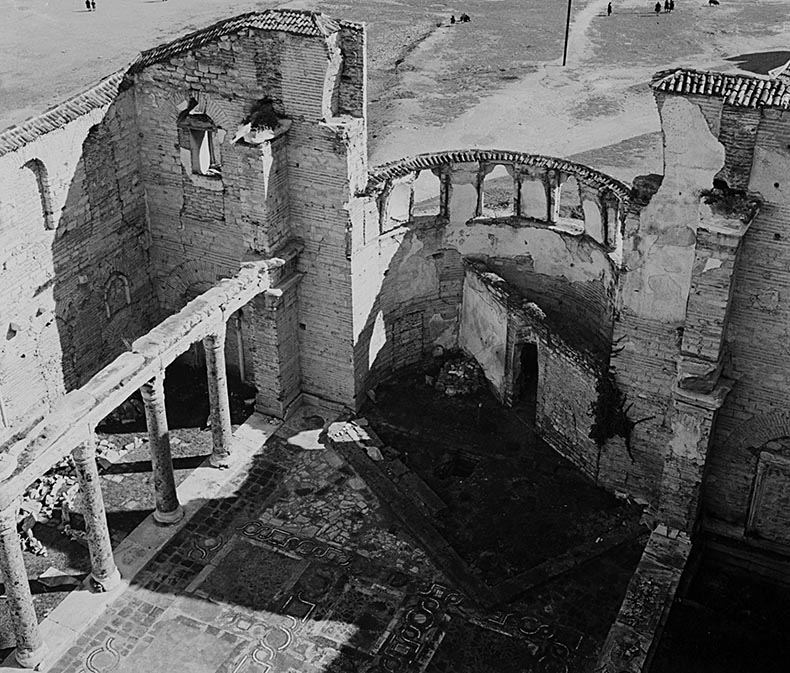
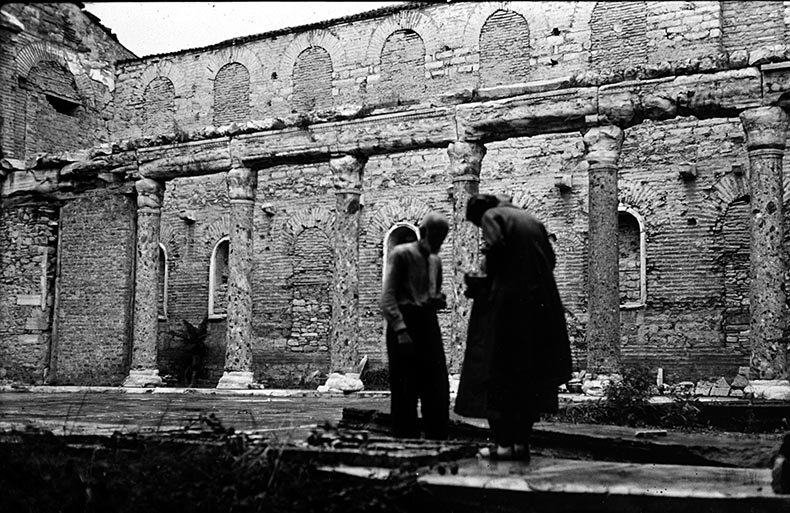
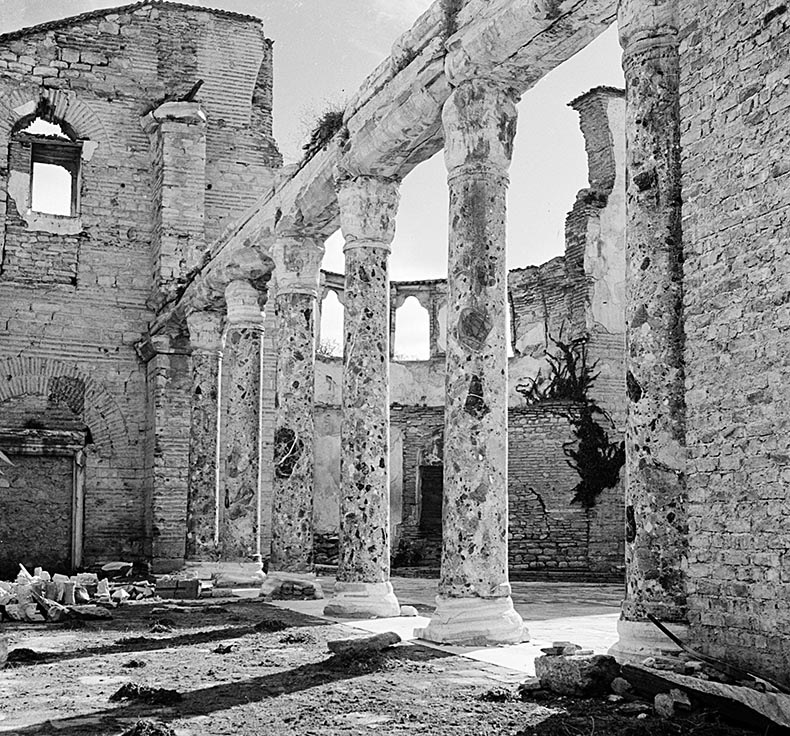 Several Byzantine emperors sought the shelter of the Studion as a refuge from danger, or as a retreat from the "vanity of the world". In 1041, Michael V Kalaphates (son of the Caulker) and his uncle Constantine fled from the popular fury excited by their deposition of the Empress Zoe - and their slaughter of three thousand persons in defending the palace. These two, now fugitives, made for the monastery by boat, and entered the church hoping for protection and sanctuary from the mob. But as soon as the hiding place became known, an angry mob forced their way into the church to wreak vengeance upon them, and created a fantastic scene of which Psellus has left us a graphic account.
Several Byzantine emperors sought the shelter of the Studion as a refuge from danger, or as a retreat from the "vanity of the world". In 1041, Michael V Kalaphates (son of the Caulker) and his uncle Constantine fled from the popular fury excited by their deposition of the Empress Zoe - and their slaughter of three thousand persons in defending the palace. These two, now fugitives, made for the monastery by boat, and entered the church hoping for protection and sanctuary from the mob. But as soon as the hiding place became known, an angry mob forced their way into the church to wreak vengeance upon them, and created a fantastic scene of which Psellus has left us a graphic account.
Upon hearing the news of what was going on, he and an officer of the imperial guard mounted horse and galloped to the Studion. A fierce mob was madly attempting to pull down(!) the church, and it was with the utmost difficulty that the two of them managed to enter the church and make their way to the altar. The building seemed full of wild, blood thirsty animals, glaring with eyes on fire at their victims, and making the air resound with the most terrible cries. Michael was on his knees clasping the altar; Constantine stood on the right; both were dressed like monks, and their features were so transformed by terror as to be almost beyond recognition.
The spectacle of greatness thus brought low was so pathetic that Psellus burst into tears and sobbed aloud. But the crowd only grew more fierce, and got closer and closer to the fugitives as though to tear them to pieces. Only a superstitious dread restrained the mob from laying hands upon them in a shrine that was so sacred and venerated. The uproar lasted for hours, the mob gradually controlling its anger, at the same time striking terror on Michael and Constantine and making it impossible for them to escape. At length, late in the afternoon, the prefect of the city appeared, accompanied by soldiers and followed by large crowds of citizens. He came with orders to remove Michael and Constantine from the church. He tried to convince Michael and Constantine that they would be safe if they accompanied him out of the sanctuary and calm them down. It didn't work. The fallen emperor and his uncle clung to the altar even more desperately. The prefect then gave orders that the two wretched men should be dragged forth by physical force. They gripped the altar yet more tightly, and in piteous tones invoked the heavenly aid of all the icons in the building! The scene became so heartrending that many of the spectators seemed to regain their humanity and felt empathy for these victims of misfortune and rose to their defense. Only by giving solemn assurance that they would not be put to death was the prefect allowed to proceed to their arrest.
Michael and Constantine were then arrested, dragged by the feet and - after having their eyes burnt out and being castrated - were banished to different monasteries, there to muse on the vanity of human greatness and repent of the mistake of exiling his adopted mother, the Empress Zoe. Perhaps if Michael had stayed dressed in Imperial vestments the crowd would have respected the sanctity of his being an Emperor and that could have saved him. Dressed as a monk caused the crowd to have even more contempt for him. Michael had been emperor for four months and was only 26 years old at his death on August 24, 1042, five months after his blinding.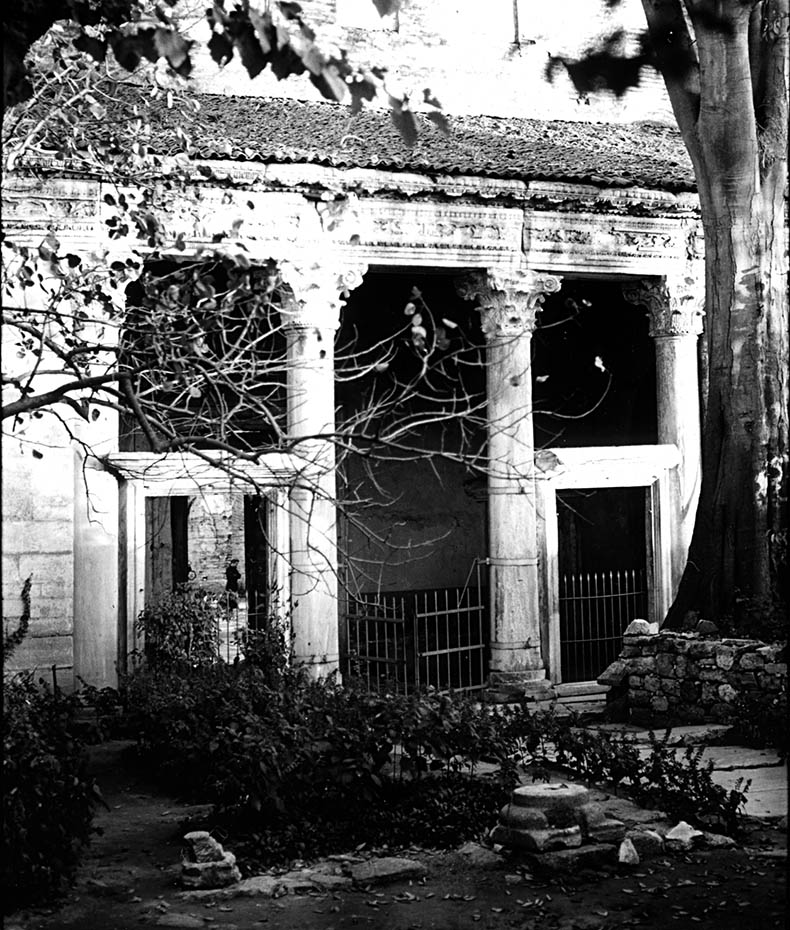
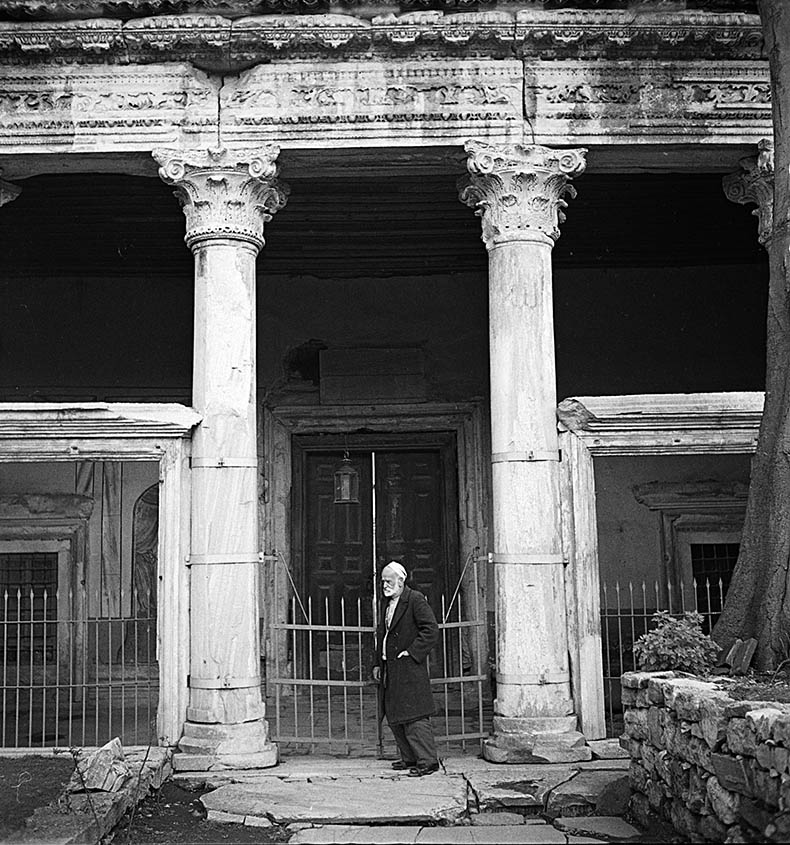 On the festival of the Decapitation of Saint John the Baptist, the emperor attended liturgy at the Studion. Early in the morning the members of the senate assembled at the monastery, while dignitaries of an inferior rank took their place outside the gate in the city walls below the monastery, and at the pier at the foot of the steep path that descends from that gate to the shore of the Sea of Marmora. All of them were awaiting the arrival of the huge imperial barge from the Great Palace.
On the festival of the Decapitation of Saint John the Baptist, the emperor attended liturgy at the Studion. Early in the morning the members of the senate assembled at the monastery, while dignitaries of an inferior rank took their place outside the gate in the city walls below the monastery, and at the pier at the foot of the steep path that descends from that gate to the shore of the Sea of Marmora. All of them were awaiting the arrival of the huge imperial barge from the Great Palace.
Both sides of the path were lined by the monks, holding lighted candles, and as soon as the emperor disembarked, the officials at the pier and the crowd of monks carrying crosses and icons, with the abbot at their head, swinging a silver censer of fragrant incense, led the way up to the gate of the monastery. There a halt was made for more court officials and select citizens of Constantinople, dressed in their finest clothes and official uniforms, to do homage with ritual chants and songs of praise to the emperor and join the procession carrying colorful banners and flags. Then the procession made its way through the grounds attached to the monastery, and then along covered passages until it reached the south-eastern end of the narthex.
Before the entrance at that point, the emperor changed into richly embroidered robes, was given a tall lighted taper, and followed the clergy into the church, taking his designated position at the east end of the south aisle, nearest the altar. The most important act he performed during the service was to incense the jeweled, gilt-silver reliquary which encased the head of John the Baptist which was enshrined on the right-hand side of the bema. At the conclusion of this service he was served by the monks with refreshments under the shade of the trees in the monastery gardens; and, after a short rest, proceeded to back to his barge with the same ceremonial as attended his arrival, and returned to the palace. Through processions and ceremonies the people were able to come in close contact with the emperor on a regular basis. Not all of the ceremonies were from the religious calendar, many were special days in the history of the city (like the founding of Constantinople), guild festivals and sporting events in the Hippodrome. It would surprise us today how little protection the emperor needed in public, his guard was meant for show more than anything else.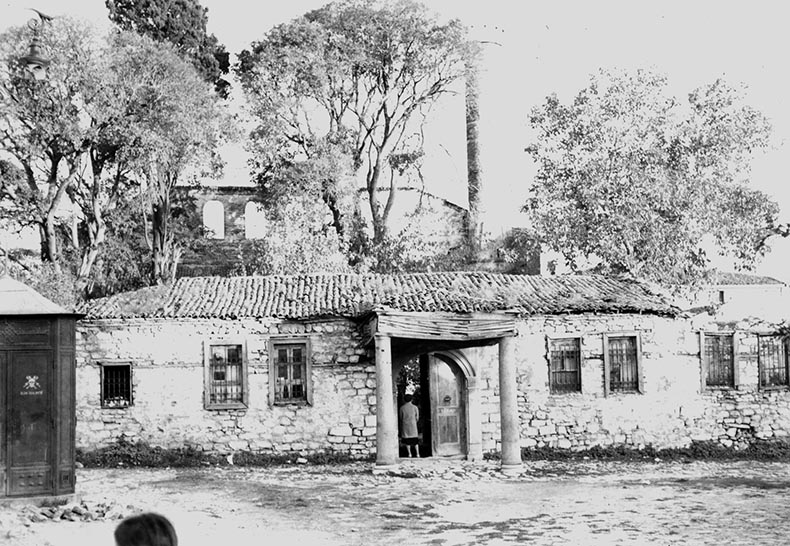
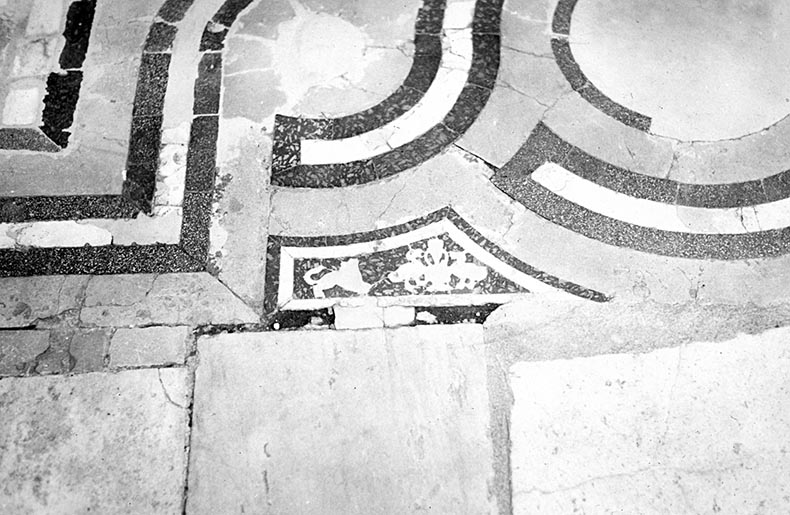 The original floor of the church was in huge, plain slabs of white marble, like at Hagia Sophia. Later, The floor of the church was repaved with pieces of marble and bands of mosaic, arranged in beautiful patterns, set with figures of birds, marine creatures, fantastic beasts and scenes from classical mythology. This opus sectile pavement dates from the 11th century, around the same time as the Pantokrator, and are in the same style.
The original floor of the church was in huge, plain slabs of white marble, like at Hagia Sophia. Later, The floor of the church was repaved with pieces of marble and bands of mosaic, arranged in beautiful patterns, set with figures of birds, marine creatures, fantastic beasts and scenes from classical mythology. This opus sectile pavement dates from the 11th century, around the same time as the Pantokrator, and are in the same style.
The Studion and Pantokrator pavements were probably made by the same workshop. A team under the direction of the Russian Archaeological Institute at Constantinople uncovered it in 1909. Unfortunately, the Russian Revolution brought the work of the Institute to a sudden end. Since then the pavement has suffered greatly, which pieces being carried off by tourists. You can see small panels that were taken from the church in 1923 and installed in 1930 in the Church of Peter and Paul in Preston, England. I was offered pieces of the floor in the the 1970's by well-meaning guides.
During the Latin occupation the roof collapsed and sheep were seen grazing in the enclosure. The Latin emperors took no interest in the church. The Greek monks had been expelled but no Catholic monks came to replace them. Richly supported by the revenue from lands, commercial rentals and the production of products produced by the monastery, after 1204 these sources of income were either destroyed in the fires of the Forth Crusade or were cut off from the Studion because they were outside the lands controlled by the Latin emperors. In any case there were no monks to keep the monastery going. The church an its outbuildings could have been damaged in the fires of 1204. Being a basilica with a wood roof the church was always in danger of fire. There was also a huge earthquake in 1231 that damaged many of the churches of the city. If the roof came down or was damaged the church was in danger of being ruined. There is no record of what happened to the Studion under Latin rule. When the city was recovered in 1261 the Greeks found the school and monastery were ruined. 30 years later, in 1292 the church was restored and, once again, became a renowned monastery and school. The work was financed by Constantine Palaeologus, the brother of Andronikos II. A wall was built around it with a tall tower and gate.
At come point after the Ottoman conquest the Verde Antico columns of the gallery were removed for another building project, probably a mosque. The beautiful marble parapet of the gallery hat so impressed visitors was taken away at the same time. Other smaller marble columns and revetment from other places in the church was also taken away. The columns of the gallery were replaced by wood posts.
The building was badly damaged in a fire in 1782 and restored as a mosque 20 years later. In this rebuilding it had a much lower roof. The final collapse of the roof took place in 1908 after a huge snowfall, followed by another fire in 1920 which left the church in its present ruin.
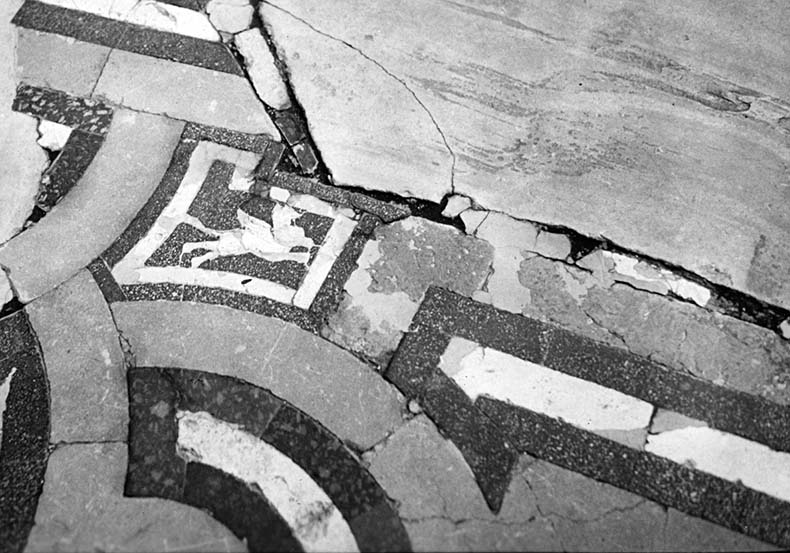
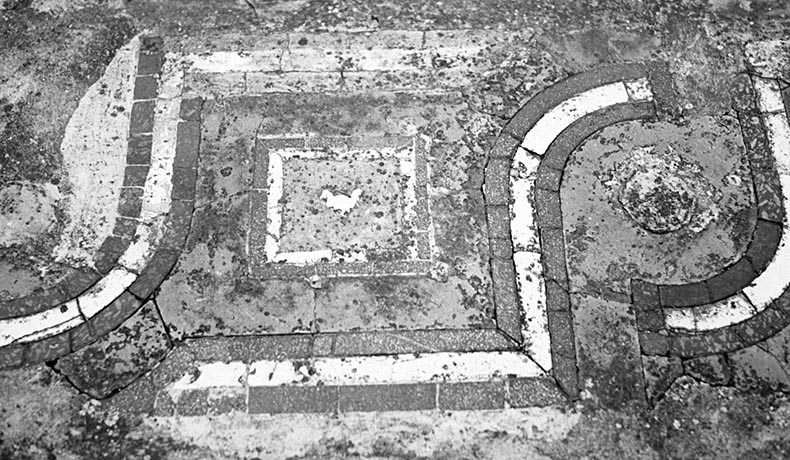
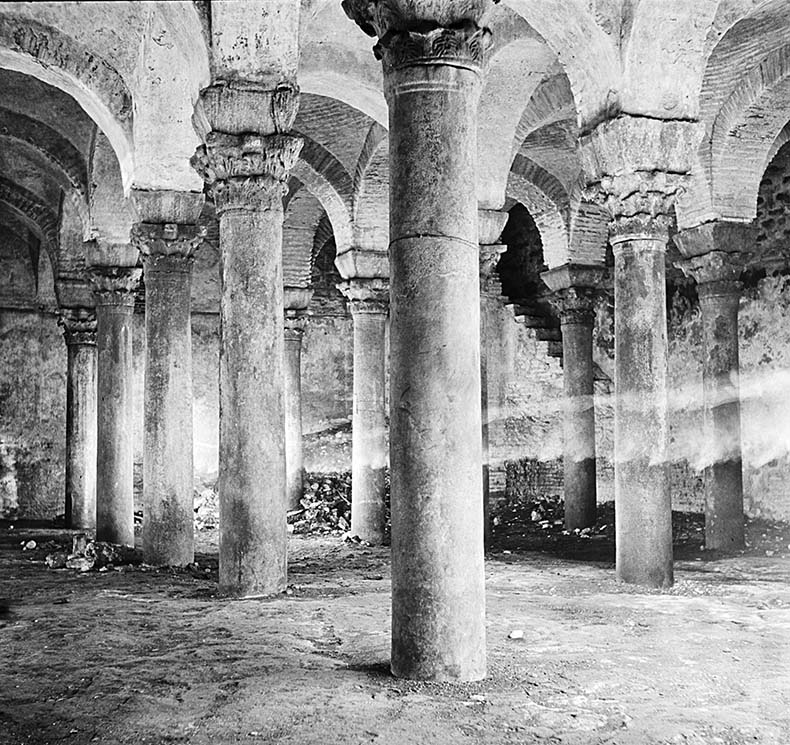
Above is a picture of the cistern under the church of Saint John the Baptist Monastery in Istanbul.
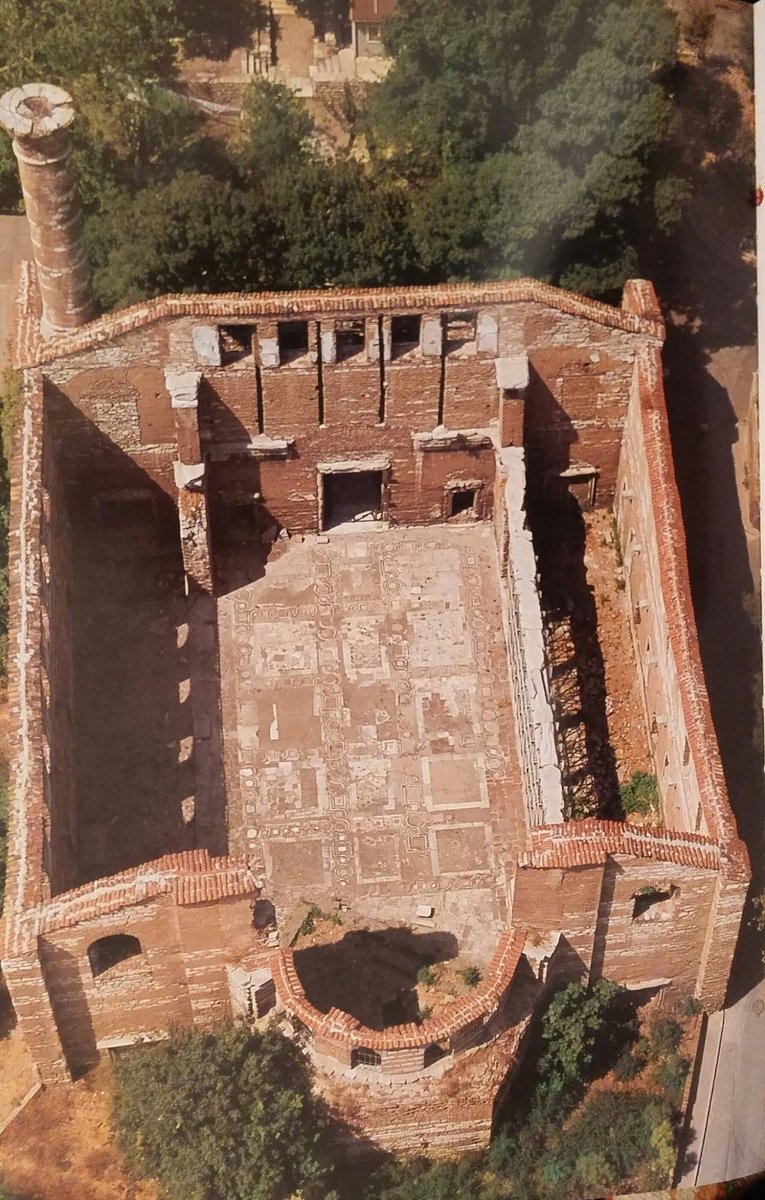
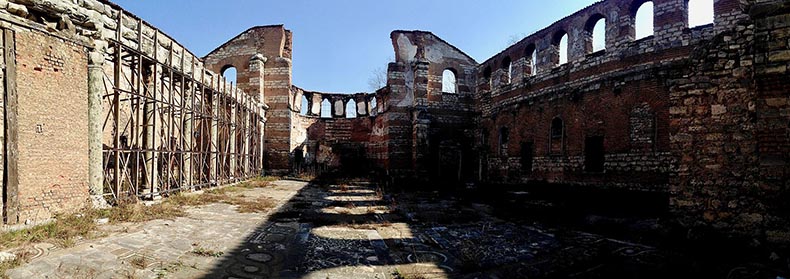
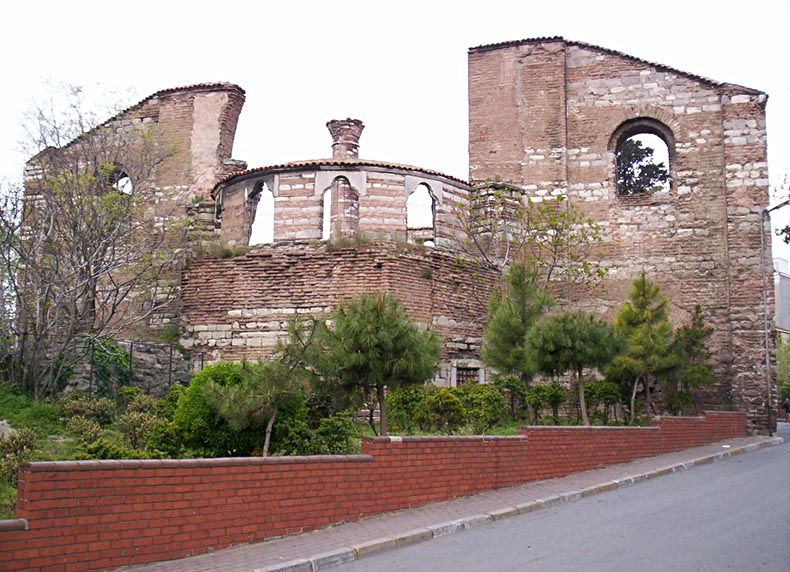 Some of the text used in this page is from the Byzantine Churches in Constantinople by Alexander Van Millingen
Some of the text used in this page is from the Byzantine Churches in Constantinople by Alexander Van Millingen
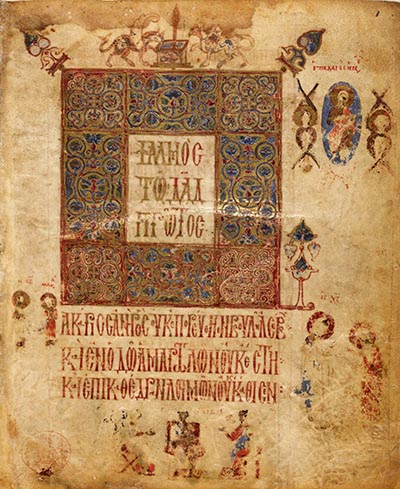
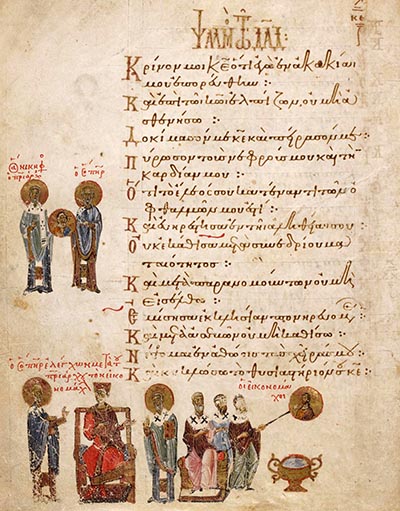
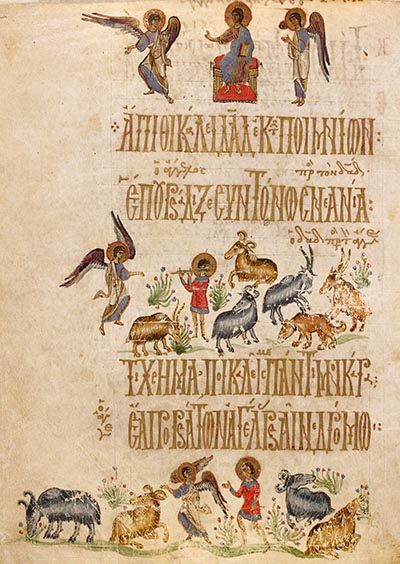
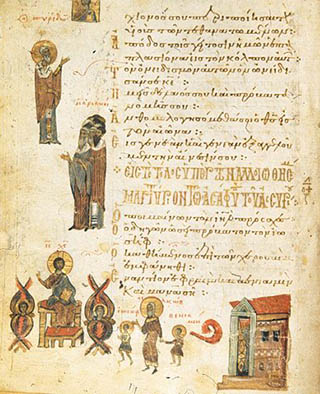
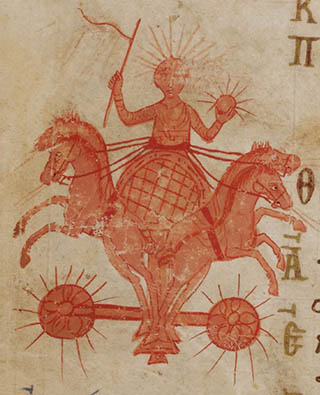
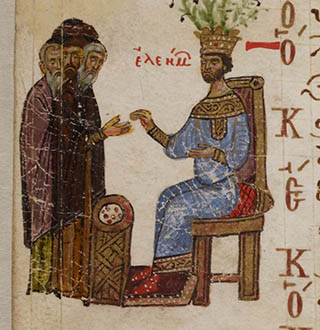
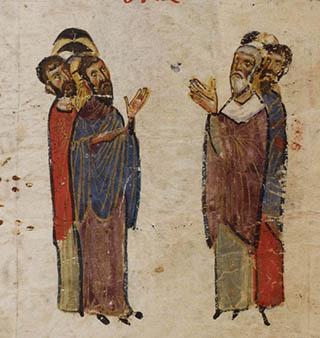
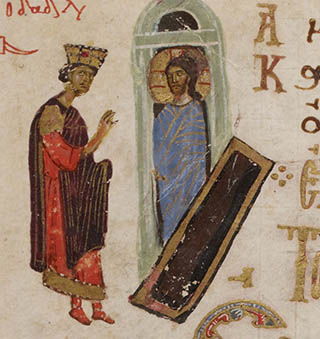
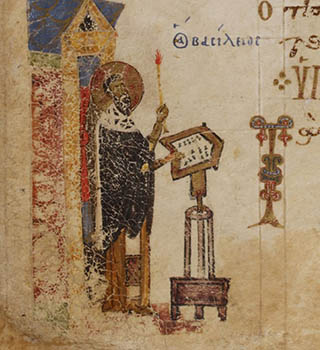
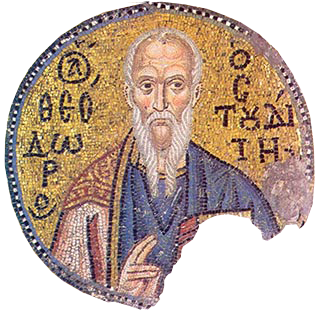 Above is a mosaic of Theodore the Studite from the church of Nea Moni on Chios
Above is a mosaic of Theodore the Studite from the church of Nea Moni on Chios Above is a column from Hagia Sophia in green breccia Verde Antique from the gallery of the church. On the ground floor there are 48 56-foot tall columns. The ancient Romans called it marmor Atracium or marmor Thessalonicum. It was quarried at Atrax, Thessaly in Greece. There were three ancient quarries, Chasampalis, Kastri and Tisaion.
Above is a column from Hagia Sophia in green breccia Verde Antique from the gallery of the church. On the ground floor there are 48 56-foot tall columns. The ancient Romans called it marmor Atracium or marmor Thessalonicum. It was quarried at Atrax, Thessaly in Greece. There were three ancient quarries, Chasampalis, Kastri and Tisaion.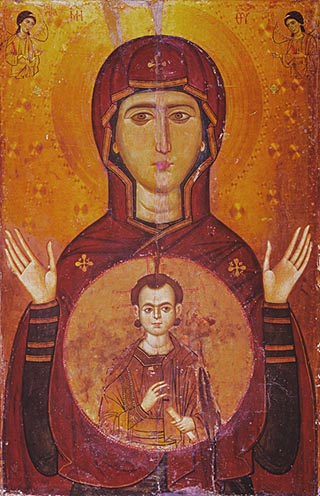
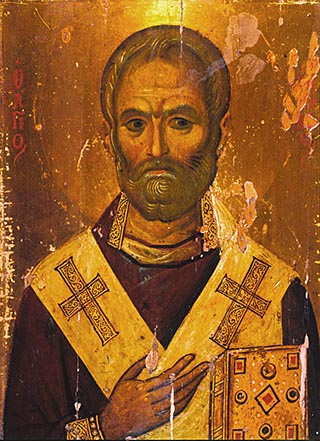



 In 1403 Ruy Gonzales Clavijo visited Constantinople and gave a first-hand description of it:
In 1403 Ruy Gonzales Clavijo visited Constantinople and gave a first-hand description of it:


 Several Byzantine emperors sought the shelter of the Studion as a refuge from danger, or as a retreat from the "vanity of the world". In 1041, Michael V Kalaphates (son of the Caulker) and his uncle Constantine fled from the popular fury excited by their deposition of the
Several Byzantine emperors sought the shelter of the Studion as a refuge from danger, or as a retreat from the "vanity of the world". In 1041, Michael V Kalaphates (son of the Caulker) and his uncle Constantine fled from the popular fury excited by their deposition of the 
 On the festival of the Decapitation of Saint John the Baptist, the emperor attended liturgy at the Studion. Early in the morning the members of the senate assembled at the monastery, while dignitaries of an inferior rank took their place outside the gate in the city walls below the monastery, and at the pier at the foot of the steep path that descends from that gate to the shore of the Sea of Marmora. All of them were awaiting the arrival of the huge imperial barge from the Great Palace.
On the festival of the Decapitation of Saint John the Baptist, the emperor attended liturgy at the Studion. Early in the morning the members of the senate assembled at the monastery, while dignitaries of an inferior rank took their place outside the gate in the city walls below the monastery, and at the pier at the foot of the steep path that descends from that gate to the shore of the Sea of Marmora. All of them were awaiting the arrival of the huge imperial barge from the Great Palace.
 The original floor of the church was in huge, plain slabs of white marble, like at Hagia Sophia. Later, The floor of the church was repaved with pieces of marble and bands of mosaic, arranged in beautiful patterns, set with figures of birds, marine creatures, fantastic beasts and scenes from classical mythology. This opus sectile pavement dates from the 11th century, around the same time as the Pantokrator, and are in the same style.
The original floor of the church was in huge, plain slabs of white marble, like at Hagia Sophia. Later, The floor of the church was repaved with pieces of marble and bands of mosaic, arranged in beautiful patterns, set with figures of birds, marine creatures, fantastic beasts and scenes from classical mythology. This opus sectile pavement dates from the 11th century, around the same time as the Pantokrator, and are in the same style.




 Some of the text used in this page is from the Byzantine Churches in Constantinople by Alexander Van Millingen
Some of the text used in this page is from the Byzantine Churches in Constantinople by Alexander Van Millingen

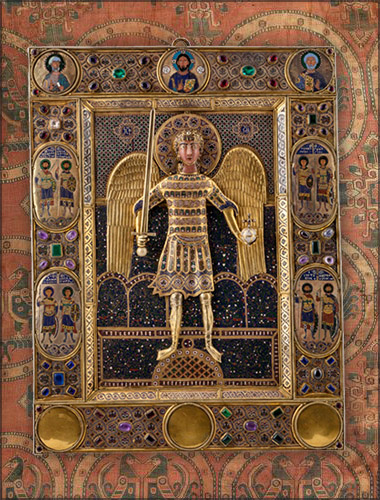

 click here for icons of christ
click here for icons of christ click here for icons of the theotokos
click here for icons of the theotokos click here for icons of angels
click here for icons of angels click here for icons of saints
click here for icons of saints








